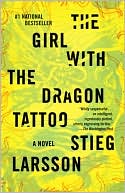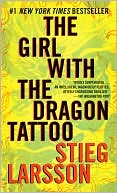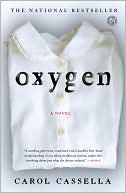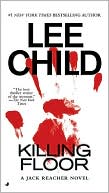Death Du Jour (Temperance Brennan Series #2)
Forensic anthropologist Kathy Reichs exploded onto bestseller lists worldwide with her phenomenal debut novel Déjà Dead — and introduced "[a] brilliant heroine" (Glamour) in league with Patricia Cornwell's Kay Scarpetta. Dr. Temperance Brennan, Quebec's director of forensic anthropology, now returns in a thrilling new investigation into the secrets of the dead.\ In the bitter cold of a Montreal winter, Tempe Brennan is digging for a corpse buried more than a century ago. Although Tempe...
Search in google:
Rarely has a first-time novelist made such a spectacular international publishing debut as Kathy Reichs did with her acclaimed forensic thriller Déjà Dead.Publishers WeeklyForensic anthropologist Temperance "Tempe" Brennan of the Laboratoire de Me dicine Legale in Montreal makes a triumphant second appearance in Reichs's powerful followup to her bestselling debut, Deja Dead. The novel opens atmospherically in a frigid church graveyard as Tempe labors to exhume the century-old remains of a nun so that the Church can posthumously declare her a saint. But the bones aren't where they're supposed to be according to the graveyard map, and there's something suspicious about them when they do turn up. Tempe's caseload multiplies as a house fire proves to be a horrific instance of arson and a university teaching assistant who's recently joined a cult goes missing. The three seemingly individual events begin to braid together, as the doings with the doomsday cult draw Tempe to North Carolina. As in Deja Dead, Reichs--herself a forensic anthropologist--renders comprehensively and believably the cool, tense intelligence of her heroine. A North Carolina native who consults in Montreal only a few months of the year, Tempe still hasn't acclimated to the bone-chilling Northern cold, and if she's come to expect the misogynist attitudes of some of the Canadian officials, she still bristles at them. Also well presented are Tempe's refreshing compassion in the face of relentless autopsies, her ability to describe a corpse with judiciously graphic detail and her penchant for revealing the art behind the science on such matters as the preservation of a corpse's teeth. Reichs's first novel, which won the Arthur Ellis Award for Best First Novel of 1997, was compared justifiably to the Kay Scarpetta novels of Patricia Cornwell. Soon, Cornwell's novels may be compared to Reichs's. Agent, Jennifer Rudolph Walsh.
Chapter 1\ If the bodies were there, I couldn't find them.\ Outside, the wind howled. Inside the old church, just the scrape of my trowel and the hum of a portable generator and heater echoed eerily in the huge space. High above, branches scratched against boarded windows, gnarled fingers on plywood blackboards.\ The group stood behind me, huddled but not touching, fingers curled tightly in pockets. I could hear the shifting from side to side, the lifting of one foot, then the other. Boots made a crunching sound on the frozen ground. No one spoke. The cold had numbed us into silence.\ I watched a cone of earth disappear through quarter-inch mesh as I spread it gently with my trowel. The granular subsoil had been a pleasant surprise. Given the surface, I had expected permafrost the entire depth of the excavation. The last two weeks had been unseasonably warm in Quebec, however, allowing snow to melt and ground to thaw. Typical Tempe luck. Though the tickle of spring had been blown away by another arctic blast, the mild spell had left the dirt soft and easy to dig. Good. Last night the temperature had dropped to seven degrees Fahrenheit. Not good. While the ground had not refrozen, the air was frigid. My fingers were so cold I could hardly bend them.\ We were digging our second trench. Still nothing but pebbles and rock fragments in the screen. I didn't anticipate much at this depth, but you could never tell. I'd yet to do an exhumation that had gone as planned.\ I turned to a man in a black parka and a tuque on his head. He wore leather boots laced to the knee, two pairs of socks rolled over the tops. His face was the color of tomato soup.\ "Just a few more inches." I gave a palm-down gesture, like stroking a cat. Slowly. Go slowly.\ The man nodded, then thrust his long-handled spade into the shallow trench, grunting like Monica Seles on a first serve.\ "Par pouces!" I yelped, grabbing the shovel. By inches! I repeated the slicing motion I'd been showing him all morning. "We want to take it down in thin layers." I said it again, in slow, careful French.\ The man clearly did not share my sentiment. Maybe it was the tediousness of the task, maybe the thought of unearthing the dead. Tomato soup just wanted to be done and gone.\ "Please, Guy, try again?" said a male voice behind me.\ "Yes, Father." Mumbled.\ Guy resumed, shaking his head, but skimming the soil as I'd shown him, then tossing it into the screen. I shifted my gaze from the black dirt to the pit itself, watching for signs that we were nearing a burial.\ We'd been at it for hours, and I could sense tension behind me. The nuns' rocking had increased in tempo. I turned to give the group what I hoped was a reassuring look. My lips were so stiff it was hard to tell.\ Six faces looked back at me, pinched from cold and anxiousness. A small cloud of vapor appeared and dissolved in front of each. Six smiles in my direction. I could sense a lot of praying going on.\ Ninety minutes later we were five feet down. Like the first, this pit had produced only soil. I was certain I had frostbite in every toe, and Guy was ready to bring in a backhoe. Time to regroup.\ "Father, I think we need to check the burial records again."\ He hesitated a moment. Then, "Yes. Of course. Of course. And we could all use coffee and a sandwich."\ The priest started toward a set of wooden doors at the far end of the abandoned church and the nuns followed, heads down, gingerly navigating the lumpy ground. Their white veils spread in identical arcs across the backs of their black wool coats. Penguins. Who'd said that? The Blues Brothers.\ I turned off the mobile spotlights and fell in step, eyes to the ground, amazed at the fragments of bone embedded in the dirt floor. Great. We'd dug in the one spot in the entire church that didn't contain burials.\ Father Ménard pushed open one of the doors and, single file, we exited to daylight. Our eyes needed little adjustment. The sky was leaden and seemed to hug the spires and towers of all the buildings in the convent's compound. A raw wind blew off the Laurentians, flapping collars and veils.\ Our little group bent against the wind and crossed to an adjacent building, gray stone like the church, but smaller. We climbed steps to an ornately carved wooden porch and entered through a side door.\ Inside, the air was warm and dry, pleasant after the bitter cold. I smelled tea and mothballs and years of fried food.\ Wordlessly, the women removed their boots, smiled at me one by one, and disappeared through a door-way to the right just as a tiny nun in an enormous ski sweater shuffled into the foyer. Fuzzy brown reindeer leaped across her chest and disappeared beneath her veil. She blinked at me through thick lenses and reached for my parka. I hesitated, afraid its weight would tip her off balance and send her crashing to the tile. She nodded sharply and urged me with upturned fingertips, so I slipped the jacket off, laid it across her arms, and added cap and gloves. She was the oldest woman that I had ever seen still breathing.\ I followed Father Ménard down a long, poorly lit hallway into a small study. Here the air smelled of old paper and schoolhouse paste. A crucifix loomed over a desk so large I wondered how they'd gotten it through the door. Dark oak paneling rose almost to the ceiling. Statues stared down from the room's upper edge, faces somber as the figure on the crucifix.\ Father Ménard took one of two wooden chairs facing the desk, gestured me to the other. The swish of his cassock. The click of his beads. For a moment I was back at St. Barnabas. In Father's office. In trouble again. Stop it, Brennan. You're over forty, a professional. A forensic anthropologist. These people called you because they need your expertise.\ The priest retrieved a leather-bound volume from the desktop, opened it to a page with a green ribbon marker, and positioned the book between us. He took a deep breath, pursed his lips, and exhaled through his nose.\ I was familiar with the diagram. A grid with rows divided into rectangular plots, some with numbers, some with names. We'd spent hours poring over it the day before, comparing the descriptions and records for the graves with their positions on the grid. Then we'd paced it all off, marking exact locations.\ Sister Élisabeth Nicolet was supposed to be in the second row from the church's north wall, third plot from the west end. Right next to Mother Aurélie. But she wasn't. Nor was Aurélie where she should have been.\ I pointed to a grave in the same quadrant, but several rows down and to the right. "O.K. Raphael seems to be there." Then down the row. "And Agathe, Véronique, Clément, Marthe, and Eléonore. Those are the burials from the 1840s, right?"\ "C'est ça."\ I moved my finger to the portion of the diagram corresponding to the southwest corner of the church. "And these are the most recent graves. The markers we found are consistent with your records."\ "Yes. Those were the last, just before the church was abandoned."\ "It was closed in 1914."\ "Nineteen fourteen. Yes, 1914." He had an odd way of repeating words and phrases.\ "Élisabeth died in 1888?"\ "C'est ça, 1888. Mère Aurélie in 1894."\ It didn't make sense. Evidence of the graves should be there. It was clear that artifacts from the 1840 burials remained. A test in that area had produced wood fragments and bits of coffin hardware. In the protected environment inside the church, with that type of soil, I thought the skeletons should be in pretty good shape. So where were Élisabeth and Aurélie?\ The old nun shuffled in with a tray of coffee and sandwiches. Steam from the mugs had fogged her glasses, so she moved with short, jerky steps, never lifting her feet from the floor. Father Ménard rose to take the tray.\ "Merci, Sister Bernard. This is very kind. Very kind."\ The nun nodded and shuffled out, not bothering to clear her lenses. I watched her as I helped myself to coffee. Her shoulders were about as broad as my wrist.\ "How old is Sister Bernard?" I asked, reaching for a croissant. Salmon salad and wilted lettuce.\ "We're not exactly sure. She was at the convent when I first started coming here as a child, before the war. World War II, that is. Then she went to teach in the foreign missions. She was in Japan for a long time, then Cameroon. We think she's in her nineties." He sipped his coffee. A slurper.\ "She was born in a small village in the Saguenay, says she joined the order when she was twelve." Slurp. "Twelve. Records weren't so good in those days in rural Quebec. Not so good."\ I took a bite of sandwich then rewrapped my fingers around the coffee mug. Delicious warmth.\ "Father, are there any other records? Old letters, documents, anything we haven't looked at?" I wriggled my toes. No sensation.\ He gestured to the papers littering the desk, shrugged. "This is everything Sister Julienne gave me. She is the convent archivist, you know."\ "Yes."\ Sister Julienne and I had spoken and corresponded at length. It was she who had initially contacted me about the project. I was intrigued from the outset. This case was very different from my usual forensic work involving the recently dead who end up with the coroner. The archdiocese wanted me to exhume and analyze the remains of a saint. Well, she wasn't really a saint. But that was the point. Élisabeth Nicolet had been proposed for beatification. I was to find her grave and verify that the bones were hers. The saint part was up to the Vatican.\ Sister Julienne had assured me that there were good records. All graves in the old church were cataloged and mapped. The last burial had taken place in 1911. The church was abandoned and sealed in 1914 following a fire. A larger one was built to replace it, and the old building was never used again. Closed site. Good documentation. Piece of cake.\ So where was Élisabeth Nicolet?\ "It might not hurt to ask. Perhaps there's something Sister Julienne didn't give you because she thought it unimportant."\ He started to say something, changed his mind. "I'm quite sure she's given me everything, but I'll ask. Sister Julienne has spent a great deal of time researching this. A great deal."\ I watched him out the door, finished my croissant, then another. I crossed my legs, tucked my feet under me, and rubbed my toes. Good. Feeling was returning. Sipping my coffee, I lifted a letter from the desk.\ I'd read it before. August 4, 1885. Smallpox was out of control in Montreal. Élisabeth Nicolet had written to Bishop Édouard Fabre, pleading that he order vaccinations for parishioners who were well, and use of the civic hospital by those who were infected. The handwriting was precise, the French quaint and outdated.\ The Convent Notre-Dame de l'Immaculée-Conception was absolutely silent. My mind drifted. I thought of other exhumations. The policeman in St-Gabriel. In that cemetery the coffins had been stacked three deep. We'd finally found Monsieur Beaupré four graves from his recorded location, bottom position, not top. And there was the man in Winston-Salem who wasn't in his own coffin. The occupant was a woman in a long floral dress. That had left the cemetery with a double problem. Where was the deceased? And who was the body in the coffin? The family never was able to rebury Grandpa in Poland, and the lawyers were girding for war when I left.\ Far off, I heard a bell toll, then, in the corridor, shuffling. The old nun was heading my way.\ "Serviettes," she screeched. I jumped, rocketing coffee onto my sleeve. How could so much volume come from so small a person?\ "Merci." I reached for the napkins.\ She ignored me, closed in, and began scrubbing my sleeve. A tiny hearing aid peeked from her right ear. I could feel her breath and see fine white hairs ringing her chin. She smelled of wool and rose water.\ "Eh, voilà. Wash it when you get home. Cold water."\ "Yes, Sister." Reflex.\ Her eyes fell on the letter in my hand. Fortunately, it was coffee-free. She bent close.\ "Élisabeth Nicolet was a great woman. A woman of God. Such purity. Such austerity." Pureté. Austérité. Her French sounded as I imagined Élisabeth's letters would if spoken.\ "Yes, Sister." I was nine years old again.\ "She will be a saint."\ "Yes, Sister. That's why we're trying to find her bones. So they can receive proper treatment." I wasn't sure just what proper treatment was for a saint, but it sounded right.\ I pulled out the diagram and showed it to her. "This is the old church." I traced the row along the north wall, and pointed to a rectangle. "This is her grave."\ The old nun studied the grid for a very long time, lenses millimeters from the page.\ "She's not there," she boomed.\ "Excuse me?"\ "She's not there." A knobby finger tapped the rectangle. "That's the wrong place."\ Father Ménard returned at that moment. With him was a tall nun with heavy black eyebrows that angled together above her nose. The priest introduced Sister Julienne, who raised clasped hands and smiled.\ It wasn't necessary to explain what Sister Bernard had said. Undoubtedly they'd heard the old woman while in the corridor. They'd probably heard her in Ottawa.\ "That's the wrong place. You're looking in the wrong place," she repeated.\ "What do you mean?" asked Sister Julienne.\ "They're looking in the wrong place," she repeated. "She's not there."\ Father Ménard and I exchanged glances.\ "Where is she, Sister?" I asked.\ She bent to the diagram once again, then jabbed her finger at the southeast corner of the church. "She's there. With Mère Aurélie."\ "But, Sis — "\ "They moved them. Gave them new coffins and put them under a special altar. There."\ Again she pointed at the southeast corner.\ "When?" we asked simultaneously.\ Sister Bernard closed her eyes. The wrinkled old lips moved in silent calculation.\ "Nineteen eleven. The year I came here as a novice. I remember, because a few years later the church burned and they boarded it up. It was my job to go in and put flowers on their altar. I didn't like that. Spooky to go in there all alone. But I offered it up to God."\ "What happened to the altar?"\ "Taken out sometime in the thirties. It's in the Holy Infant Chapel in the new church now." She folded the napkin and began gathering coffee things. "There was a plaque marking those graves, but not anymore. No one goes in there now. Plaque's been gone for years.\ Father Ménard and I looked at each other. He gave a slight shrug.\ "Sister," I began, "do you think you could show us where Élisabeth's grave is?"\ "Bien sûr."\ "Now?"\ "Why not?" China rattled against china.\ "Never mind the dishes," said Father Ménard. "Please, get your coat and boots on, Sister, and we'll walk over."\ Ten minutes later we were all back in the old church. The weather had not improved and, if anything, was colder and damper than in the morning. The wind still howled. The branches still tapped.\ Sister Bernard picked an unsteady path across the church, Father Ménard and I each gripping an arm. Through the layers of clothing, she felt brittle and weightless.\ The nuns followed in their spectator gaggle, Sister Julienne ready with steno pad and pen. Guy hung to the rear.\ Sister Bernard stopped outside a recess in the southeast corner. She'd added a hand-knitted chartreuse hat over her veil, tied under her chin. We watched her head turn this way and that, searching for markers, getting her bearings. All eyes focused on the one spot of color in the dreary church interior.\ I signaled to Guy to reposition a light. Sister Bernard paid no attention. After some time she moved back from the wall. Head left, head right, head left. Up. Down. She checked her position once more, then gouged a line in the dirt with the heel of her boot. Or tried to.\ "She's here." The shrill voice echoed off stone walls.\ "You're sure?"\ "She's here." Sister Bernard did not lack self-assurance.\ We all looked at the mark she'd made.\ "They're in little coffins. Not like regular ones. They were just bones, so everything fit into small coffins." She held her tiny arms out to indicate a child-size dimension. An arm trembled. Guy focused the light on the spot at her feet.\ Father Ménard thanked the ancient nun and asked two of the sisters to help her back to the convent. I watched their retreat. She looked like a child between them, so small that the hem of her coat barely cleared the dirt floor.\ I asked Guy to bring the other spotlight to the new location. Then I retrieved my probe from the earlier site, positioned the tip where Sister Bernard had indicated, and pushed on the T-bar handle. No go. This spot was less defrosted. I was using a tile probe to avoid damaging anything underground, and the ball-shaped tip did not pass easily through the partially frozen upper layer. I tried again, harder.\ Easy, Brennan. They won't be happy if you shatter a coffin window. Or poke a hole through the good sister's skull.\ I removed my gloves, wrapped my fingers around the T-bar, and thrust again. This time the surface broke, and I felt the probe slide into the subsoil. Suppressing the urge to hurry, I tested the earth, eyes closed, feeling for minute differences in texture. Less resistance could mean an airspace where something had decomposed. More could mean that a bone or artifact was present underground. Nothing. I withdrew the probe and repeated the process.\ On the third try I felt resistance. I withdrew, reinserted six inches to the right. Again, contact. There was something solid not far below the surface.\ I gave the priest and nuns a thumbs-up, and asked Guy to bring the screen. Laying aside the probe, I took up a flat-edged shovel and began to strip thin slices of earth. I peeled soil, inch by inch, tossing it into the screen, my eyes moving from the fill to the pit. Within thirty minutes I saw what I was looking for. The last few tosses were dark, black against the red-brown dirt in the screen.\ I switched from shovel to trowel, bent into the pit, and carefully scraped the floor, removing loose particles and leveling the surface. Almost immediately I could see a dark oval. The stain looked about three feet long. I could only guess at its width since it lay half hidden under unexcavated soil.\ "There's something here," I said, straightening. My breath hung in front of my face.\ As one, the nuns and priest moved closer and peered into the pit. I outlined the oval with my trowel tip. At that moment Sister Bernard's escort nuns rejoined the flock.\ "It could be a burial, though it looks rather small. I've dug a bit to the left, so I'll have to take this portion down." I indicated the spot where I was squatting. "I'll excavate outside the grave itself and work my way down and in. That way we'll have a profile view of the burial as we go. And it's easier on the back to dig that way. An outside trench will also allow us to remove the coffin from the side if we have to."\ "What is the stain?" asked a young nun with a face like a Girl Scout.\ "When something with a high organic content decays, it leaves the soil much darker. It could be from the wooden coffin, or flowers that were buried with it." I didn't want to explain the decomposition process. "Staining is almost always the first sign of a burial."\ Two of the nuns crossed themselves.\ "Is it Éthsabeth or Mère Aurélie?" asked an older nun. One of her lower lids did a little dance.\ I raised my hands in a "beats me" gesture. Pulling on my gloves, I started troweling the soil over the right half of the stain, expanding the pit outward to expose the oval and a two-foot strip along its right.\ Again, the only sounds were scraping and screening. Then,\ "Is that something?" The tallest of the nuns pointed to the screen.\ I rose to look, grateful for an excuse to stretch.\ The nun was indicating a small, reddish-brown fragment.\ "You bet your a — . That sure is, Sister. Looks like coffin wood."\ I got a stack of paper bags from my supplies, marked one with the date, location, and other pertinent information, set it in the screen, and laid the others on the ground. My fingers were now completely numb.\ "Time to work, ladies. Sister Julienne, you record everything we find. Write it on the bag, and enter it in the log, just as we discussed. We're at" — I looked into the pit — "about the two-foot level. Sister Marguerite, you're going to shoot some pictures?"\ Sister Marguerite nodded, held up her camera.\ They flew into action, eager after the long hours of watching. I troweled, Sisters Eyelid and Girl Scout screened. More and more fragments appeared, and before long we could see an outline in the stained soil. Wood. Badly deteriorated. Not good.\ Using my trowel and bare hands, I continued to uncover what I hoped was a coffin. Though the temperature was below freezing and all feeling had left my fingers and toes, inside my parka I sweated. Please let this be her, I thought. Now who was praying?\ As I inched the pit northward, exposing more and more wood, the object expanded in breadth. Slowly, the contour emerged: hexagonal. Coffin shape. It took some effort not to shout "Hallelujah!" Churchy, but unprofessional, I told myself.\ I teased away earth, handful by handful, until the top of the object was fully exposed. It was a small casket, and I was moving from the foot toward the head. I put down my trowel and reached for a paintbrush. My eyes met those of one of my screeners. I smiled. She smiled. Her right lid did a jitterbug.\ I brushed the wooden surface again and again, teasing away decades of encrusted soil. Everyone stopped to watch. Gradually, a raised object emerged on the coffin lid. Just above the widest point. Exactly where a plaque would be. My heart did its own fast dance.\ I brushed dirt from the object until it came into focus. It was oval, metallic, with a filigreed edge. Using a toothbrush, I gently cleaned its surface. Letters emerged.\ "Sister, could you hand me my flashlight? From the pack?"\ Again, they leaned in as one. Penguins at a watering spot. I shone the beam onto the plaque. "Éthsabeth Nicolet — 1846-1888. Femme contemplative."\ "We've got her," I said to no one in particular.\ "Hallelujah!" shouted Sister Girl Scout. So much for church etiquette.\ For the next two hours we exhumed Élisabeth's remains. The nuns, and even Father Ménard, threw themselves into the task like undergraduates on their first dig. Habits and cassock swirled around me as dirt was screened, bags were filled, labeled, and stacked, and the whole process was captured on film. Guy helped, though still reluctant. It was as odd a crew as I've ever directed.\ Removing the casket was not easy. Though it was small, the wood was badly damaged and the coffin interior had filled with dirt, increasing the weight to about ten tons. The side trench had been a good call, though I'd underestimated the space we'd need. We had to expand outward by two feet to allow plywood to slide under the coffin. Eventually, we were able to raise the whole assemblage using woven polypropylene rope.\ By five-thirty we were drinking coffee in the convent kitchen, exhausted, fingers, toes, and faces thawing. Éthsabeth Nicolet and her casket were locked in the back of the archdiocese van, along with my equipment. Tomorrow, Guy would drive her to the Laboratoire de Médecine Légale in Montreal, where I work as Forensic Anthropologist for the Province of Quebec. Since the historic dead do not qualify as forensic cases, special permission had been obtained from the Bureau du Coroner to perform the analysis there. I would have two weeks with the bones.\ I set down my cup and said my good-byes. Again. The sisters thanked me, again, smiling through tense faces, nervous already about my findings. They were great smilers.\ Father Ménard walked me to my car. It had grown dark and a light snow was falling. The flakes felt strangely hot against my cheeks.\ The priest asked once more if I wouldn't prefer to overnight at the convent. The snow sparkled behind him as it drifted in the porch light. Again, I declined. A few last road directions, and I was on my way.\ Twenty minutes on the two-lane and I began to regret my decision. The flakes that had floated lazily in my headlights were now slicing across in a steady diagonal curtain. The road and the trees to either side were covered by a membrane of white that was growing more opaque by the second.\ I clutched the wheel with both hands, palms clammy inside my gloves. I slowed to forty. Thirty-five. Every few minutes I tested the brakes. While I have been living in Quebec off and on for years, I have never grown accustomed to winter driving. I think of myself as tough, but put me on wheels in snow and I am Princess Chickenheart. I still have the typical Southern reaction to winter storms. Oh. Snow. Then we won't be going out, of course. Les québécois look at me and laugh.\ Fear has a redeeming quality. It drives away fatigue. Tired as I was, I stayed alert, teeth clenched, neck craned, muscles rigid. The Eastern Townships Autoroute was a bit better than the back roads, but not much. Lac Memphrémagog to Montreal is normally a two-hour drive. It took me almost four.\ Shortly after ten, I stood in the dark of my apartment, exhausted, glad to be home. Quebec home. I'd been away in North Carolina almost two months. Bienvenue. My thought process had already shifted to French.\ I turned up the heat and checked the refrigerator. Bleak. I microzapped a frozen burrito and washed it down with room temperature root beer. Not haute cuisine, but filling.\ The luggage I'd dropped off Tuesday night sat unopened in the bedroom. I didn't consider unpacking. Tomorrow. I fell into bed, planning to sleep at least nine hours. The phone woke me in less than four.\ "Oui, yes," I mumbled, the linguistic transition now in limbo.\ "Temperance. It is Pierre LaManche. I am very sorry to disturb you at this hour."\ I waited. In the seven years I'd worked for him, the lab director had never called me at three in the morning.\ "I hope things went well at Lac Memphrémagog." He cleared his throat. "I have just had a call from the coroner's office. There is a house fire in St-Jovite. The firefighters are still trying to get it under control. The arson investigators will go in first thing in the morning, and the coroner wants us there." Again the throat. "A neighbor says the residents are at home. Their cars are in the driveway."\ "Why do you need me?" I asked in English.\ "Apparently the fire is extremely intense. If there are bodies, they will be badly burned. Perhaps reduced to calcined bone and teeth. It could be a difficult recovery."\ Damn. Not tomorrow.\ "What time?"\ "I will come for you at six A.M.?"\ "O.K."\ "Temperance. It could be a bad one. There were children living there."\ I set the alarm for five-thirty.\ Bienvenue.\ Copyright © 1999 by Kathleen J. Reichs
\ From Barnes & NobleThe Barnes & Noble Review\ Who woulda thunk it. \ While there have been serial killer novels in various forms for at least a century, this particular type of tale didn't formalize into a subgenre until Shane Stevens, Lawrence Sanders, Thomas Harris, and Patricia Cornwell defined it as a set of conventions and story patterns. Harris and Cornwell added the forensics. Sort of what Erle Stanley Gardner did with the legal mystery back in the '30s. Because Cornwell now leads the pack, everybody who works in anything remotely like the serial killer form is compared to her. She has her fans; she has her detractors.\ Kathy Reichs's first novel, Deja Dead , was so successful that the Cornwell comparison was inevitable and, in at least a few ways, fair. What impels them novels is science, forensic science, and what seems to win their readers is the particular tone the forensics lend the narrative. The knowing clinical detail seems to excite the readers as much as the human aspects of the story.\ You can decide for yourself which writer you like better, Cornwell or Reichs. Hell, nothing wrong with liking them both. Comparisons and competitions get tiresome after a while.\ As for my report on the new Reichs novel, Death du Jour — you knew I'd get around to it eventually, didn't you? — I found it a skillfully done mystery, long on mood and character. Reichs has a solid grasp of how to start and end a scene, paying it off with maximum effect so you'll be sure not to put the book down. If she hasn't studied her Ed McBain (the all-time champ of starting and ending scenes), I'd be surprised.\ She is also able to juggle subplots extremely well. The A plot here concerns Temperance Brennan (a Romance novel name I'll never warm to) exhuming the remains of Sister Elisabeth Nicolet, who was buried in 1888, a nun the church may make a saint. When the bones are finally located, Brennan suspects that the nun did not die naturally. The B story line involves a nasty arson case. And story line C brings in Brennan's sister, a missing student, and...I'm getting confused just retyping my notes here. The amazing thing is, you don't see any of the seams in this book. Reichs is a first-rate plotter. She pulls off some very intricate storytelling with ease.\ She's also a good writer. There's a finished, polished feel to her sentences, and a real feel for place in her descriptions. She enjoys writing and has respect for it. There's nothing slapdash here. I haven't yet read her first novel. But if it's half as good as this one, I can see what all the fuss was about.\ — Ed Gorman\ \ \ \ \ \ Publishers Weekly\ - Publisher's Weekly\ Forensic anthropologist Temperance "Tempe" Brennan of the Laboratoire de Me dicine Legale in Montreal makes a triumphant second appearance in Reichs's powerful followup to her bestselling debut, Deja Dead. The novel opens atmospherically in a frigid church graveyard as Tempe labors to exhume the century-old remains of a nun so that the Church can posthumously declare her a saint. But the bones aren't where they're supposed to be according to the graveyard map, and there's something suspicious about them when they do turn up. Tempe's caseload multiplies as a house fire proves to be a horrific instance of arson and a university teaching assistant who's recently joined a cult goes missing. The three seemingly individual events begin to braid together, as the doings with the doomsday cult draw Tempe to North Carolina. As in Deja Dead, Reichs--herself a forensic anthropologist--renders comprehensively and believably the cool, tense intelligence of her heroine. A North Carolina native who consults in Montreal only a few months of the year, Tempe still hasn't acclimated to the bone-chilling Northern cold, and if she's come to expect the misogynist attitudes of some of the Canadian officials, she still bristles at them. Also well presented are Tempe's refreshing compassion in the face of relentless autopsies, her ability to describe a corpse with judiciously graphic detail and her penchant for revealing the art behind the science on such matters as the preservation of a corpse's teeth. Reichs's first novel, which won the Arthur Ellis Award for Best First Novel of 1997, was compared justifiably to the Kay Scarpetta novels of Patricia Cornwell. Soon, Cornwell's novels may be compared to Reichs's. Agent, Jennifer Rudolph Walsh.\ \ \ Library JournalWhat kind of a corpse will Dr. Temperence Brennan be faced with today? Old or young woman? Baby? Cat? She gets them all. Did you know one can tell the time of death by the kinds of bugs found in the putrefying body? Get ready for the details. The plot takes second place to the bodies, but the characterization of Tempy has improved--she is more interesting, less defensive, and more likable than in D j Dead, where she was introduced to the reading public. Moreover, the descriptions of Beaufort, SC, Charlotte, NC, and Montreal are certain to appeal to aficionados of those locales. Bonnie Hurren reads the story well and uses several variant Southern, French, and Irish accents with confidence and verve. She is fun to listen to and brings credibility to Tempy's uncertainty about beginning a romance with charming Lt. Ryan. Recommended for regional or large mystery collections.--Juleigh Muirhead Clark, John D. Rockefeller Jr. Lib., Williamsburg, VA Copyright 2000 Cahners Business Information.\ \ \ \ \ NY Times Book ReviewIt's hard to go wrong with a story that opens with a bunch of nuns huddled around an empty grave in the dead of a Montreal winter.\ \ \ \ \ Kirkus ReviewsCalled from her peaceful exhumation of the century-old bones of Sister Elisabeth Nicolet, whose heroic work during Quebec's 1885 smallpox epidemic may qualify her for sainthood, consulting anthropologist Temperance Brennan finds herself in a charnel house. The two bodies that have been discovered in a burning house in St-Jovite were both murdered, one horribly, before the fire was set, and four more corpses, two of them infants, are found nearby. This tableau, showing Reichs's strength in the gruesome details of forensics, is only Act One of a tale that will involve Tempe with a student missing from McGill University, a threateningly oracular professor of religious studies, and Tempe's own flamboyant sister, Harriet Lamour. When the grisly discoveries Tempe's made in the lab link the dead of St-Jovite to Dominick Owens's commune in sleepy Beaufort, South Carolina, the site of two other killings, the evidence shrieks conspiracy, and the prose shrieks along with it: chapters end with the likes of Tempe's "trepidation escalat[ing] to real fear," "an icy wind rocketing through my soul," and "my jaw dropp[ing] in amazement." Beneath all the hand-wringing, readers with strong stomachs will find an even broader canvas than Déjà Dead (1997), Reichs's striking debut, though one with more mystification than mystery. Reichs plots ambitiously, knows her way around a morgue, isn't afraid to pile on the Grand Guignol, and spins a tale that reads, well, like a house afire. (Author tour)\ \








